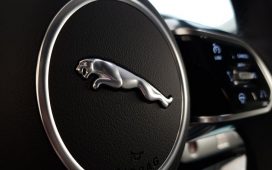At a preview event for the Q6 e-tron electric mid-size SUV, Audi Australia explained how its incoming range electric cars will prop up its of hybrid and combustion vehicles — even the fast ones — during a new era of emissions laws in Australia.
For the uninitiated, Australia’s new vehicle efficiency standard (NVES) places increasingly strict fleet CO2 targets on automakers. It kicks in from 2025 and reaches until 2029, bringing Australia more in line with the policy settings which have long determined emissions standards for vehicles in Europe.
Having had time to digest these changes, Head of Product Matt Dale explained to CarsGuide how EVs will keep combustion engines alive. “With the credit and debit system with NVES, if you sell one [Q6 e-tron], it could off-set ten or twenty or thirty ICE cars not as efficient to that overall target, that’s why we say it’s a balance. It will [ultimately] be driven by regulations, but our number one concern is the customer”
“RS models, overall, have a small impact because we can have cars like [the Q6]. As each year goes by, these regulations get tougher. For the Audi brand, this means when we look at our whole model range, we can use those technologies from mild hybrid all the way through to plug-in hybrid and battery electric.
“We’ll see the mix [of BEVs] increase as those regulations get tougher.”
Each Q6 e-tron might be a zero-emissions proposition but something like the 4.0-litre twin-turbo V8 RS Q8 produces a whopping 276g/km of C02 on the WLTP combined cycle — nearly double what the brand’s fleet average needs to be for it to avoid penalties.

While more mainstream engines in Audi’s range are already Euro 6 compliant (and thus, ahead of NVES rules), there are advantages Audi can draw from to maintain its twin-turbo V8s, turbocharged six-cylinder engines and diesels, which are increasingly being shunned by even European contemporaries like Mercedes-Benz and Volvo.
Previously, for example, the brand also confirmed NVES was measured at a group level, so vehicles sold by Volkswagen, Skoda, or Cupra all counted toward its total. This will make Audi’s life easier (and its range of vehicles more secure) as the more mainstream brands in the group are in the process of rolling out more hybrid and zero-emissions offerings to sell in larger numbers than the luxury brand can manage.

Later in the decade things will get much harder, even for a group like Volkswagen with such flexibility. By 2029, the limit for “type 1” (non-ladder-frame) vehicles is just 58g/km, down from the 141g/km to be enforced in 2025 — a level of emissions currently only achievable by plug-in hybrids. Even a featherweight plugless hybrid like the Toyota Yaris still produces 76g/km on the combined cycle.
Explaining how Audi sees the global electric vehicle market downturn colliding with the ever-increasing limits imposed by NVES, local Managing Director Jeff Mannering said: “I think the expectation was it was going to take off a lot faster.”

“It’s probably not going to be as quick as it was,” he said of battery electric sales increases “But it will get to a point in time, from a global point of view I think Audi has said by 2033 or 2035, there will be no more production or investment in combustion models.”
“So for Audi there’s a defined timeline, the transition was [previously] all-electric in 2027, I can probably say that won’t be [the case]. But for the portfolio, we’ll have PHEVs and MHEV+, it’s the product, it’s the price to offset what you need to sell.”

He warned sales for manufacturers could shrink rapidly if they don’t keep on top of balancing emissions targets with the desire of customers, as NVES closes in.
“We’re looking at it every day.”







